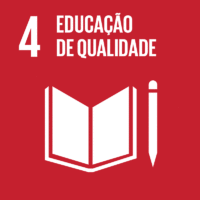Ciência_Iscte
Publicações
Descrição Detalhada da Publicação
Self-similarity in Einstein-Maxwell-dilaton theories and critical collapse
Título Revista
Physical Review D
Ano (publicação definitiva)
2018
Língua
--
País
Estados Unidos da América
Mais Informação
Web of Science®
Scopus
Google Scholar
Esta publicação não está indexada no Overton
Abstract/Resumo
We study continuously self-similar solutions of four-dimensional Einstein-Maxwell-dilaton theory, with an arbitrary dilaton coupling. Self-similarity is an emergent symmetry of gravitational collapse near the threshold of black hole formation. The resulting “critical collapse” picture has been intensively studied in the past for self-gravitating scalar fields or perfect fluids, but little is known concerning other systems. Here, we assess the impact of gauge fields on critical collapse, in the context of low-energy string theories. Matter fields need not inherit the symmetries of a spacetime. We determine the homothetic conditions that scale invariance of the metric imposes on the dilaton and electromagnetic fields, and we obtain their general solution. The inclusion of a potential for the dilaton is compatible with the homothetic conditions if and only if it is of the Liouville type. By imposing also spherical symmetry, a detailed analysis of critical collapse in these systems is possible by casting the field equations as an autonomous system. We find analytically that Choptuik’s critical exponent depends on the dilaton coupling. Despite this and the presence of two novel fixed points, the electromagnetic field necessarily vanishes for the critical solution.
Agradecimentos/Acknowledgements
--
Palavras-chave
Classificação Fields of Science and Technology
- Ciências Físicas - Ciências Naturais
Contribuições para os Objetivos do Desenvolvimento Sustentável das Nações Unidas
Com o objetivo de aumentar a investigação direcionada para o cumprimento dos Objetivos do Desenvolvimento Sustentável para 2030 das Nações Unidas, é disponibilizada no Ciência_Iscte a possibilidade de associação, quando aplicável, dos artigos científicos aos Objetivos do Desenvolvimento Sustentável. Estes são os Objetivos do Desenvolvimento Sustentável identificados pelo(s) autor(es) para esta publicação. Para uma informação detalhada dos Objetivos do Desenvolvimento Sustentável, clique aqui.

 English
English


